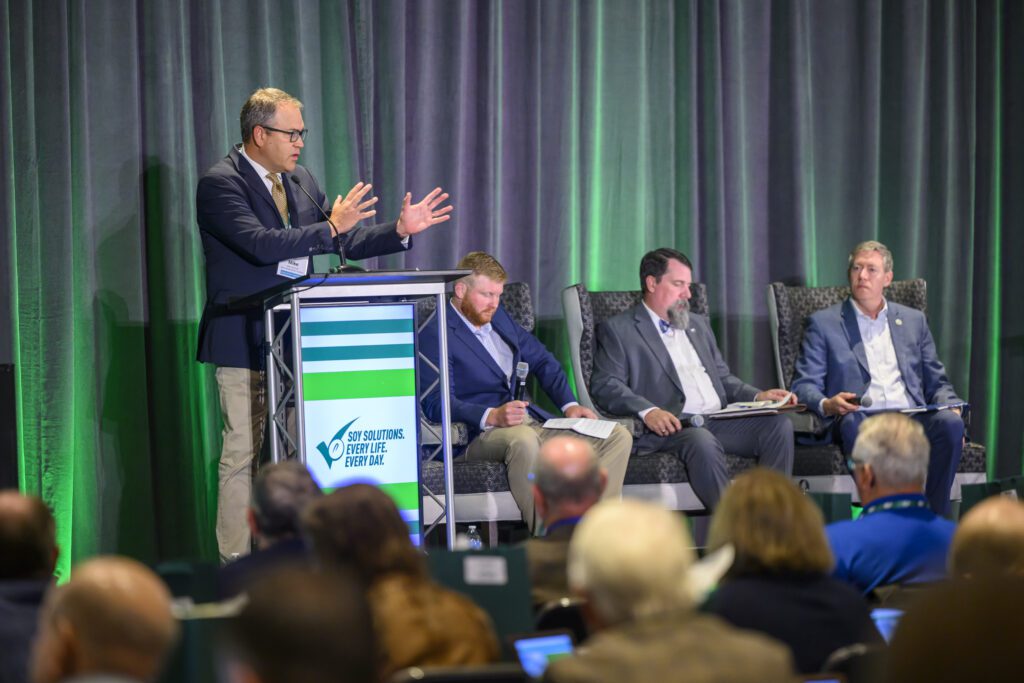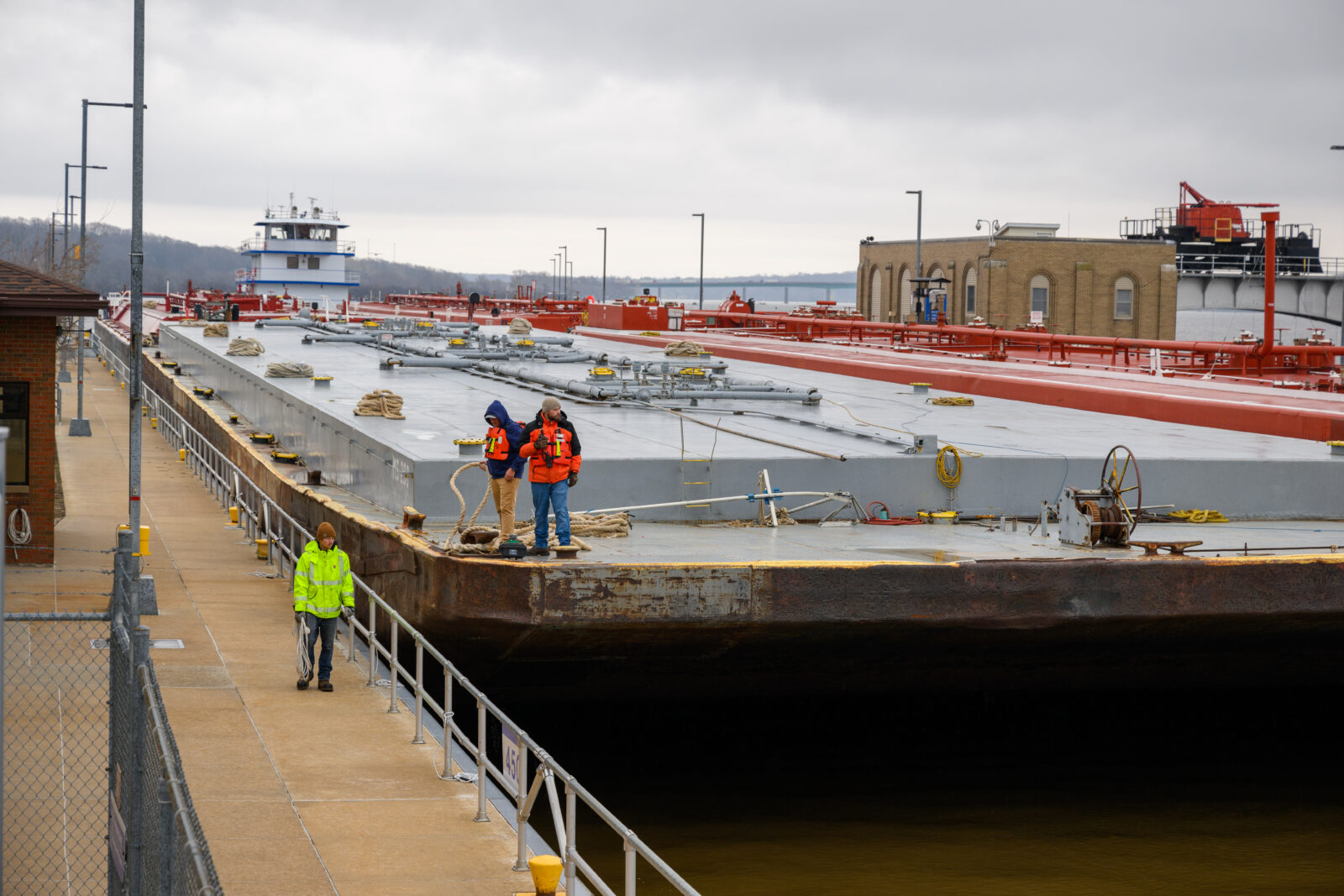In a year marked by dramatic shifts in transportation infrastructure, the events surrounding the Mississippi River, Panama Canal and Baltimore’s Francis Scott Key Bridge have captured national attention. From record low water levels affecting river and ocean commerce to sudden flooding and a catastrophic bridge collapse, the resilience and adaptability of infrastructure systems are being tested like never before.
The disruptions to transportation infrastructure, especially trucking and rail, can cause ripple effects for consumers that translate to higher prices at grocery stores and higher prices for other goods and services.
Last fall, the Mississippi River saw historically low water levels, significantly disrupting the flow of commodities. The drop in water levels hindered the movement of grain downriver and restricted fertilizer transport upriver, causing widespread concern among farmers and industries dependent on these vital supplies. In July, flood warnings were issued along the river, making a 360-degree turn and demonstrating the volatility and unpredictability of waterways.
“We were reminded in very vivid terms over the last several years, but including the last 10 months, that our supply chain is expansive, but it’s also constricted,” Steenhoek says. “Our supply chain is robust, but it’s also vulnerable. And that reality manifested itself at places like the Panama Canal.”
All told about 600 million bushels of U.S. Soy pass through the Panama Canal in a given year, making it an essential link in the expansive global supply chain.
Recognizing the importance of resilient infrastructure, United Soybean Board (USB) farmer-leaders approved about $5.5 million across four programs in the FY25 budget.
“The goal is to support and promote infrastructure investment that addresses supply chain bottlenecks, increases competitiveness and opens new market opportunities,” says Meagan Kaiser, the immediate past chair of USB.
Transportation infrastructure panel
Farmer leaders from USB listened to a transportation infrastructure panel in Baltimore during their summer board meeting. The leaders were reminded how quickly transportation logistics could change after the Francis Scott Key Bridge collapsed just a few miles away. Last March, the cargo ship Dali collided with the bridge, leading to its collapse and the subsequent disruption of operations at the Port of Baltimore. Less than six months later, the port is fully operational, showcasing a rapid and efficient recovery effort, but it wasn’t without significant disruptions.
“The fact that the Port of Baltimore is fully functional today, just six months after such a significant incident, is nothing short of miraculous,” Steenhoek says. “This recovery wasn’t just about physical repairs but also about logistical coordination and strategic planning.”
Last year, the Port of Baltimore exported $700 million in agricultural products and $934 million in farm machinery and parts. Baltimore ranks 28th among U.S. ports in overall ag exports but is fifth in containerized soybeans. Soybeans are the port’s top exported ag commodity, worth $243 million.
The panel featured key experts who shared their insights into how such a rapid recovery was possible and the port’s importance. Among them was Kevin Atticks, Maryland Secretary of Agriculture. He explained the immediate actions taken following the bridge collapse.
“First, I’ll say that when this occurred, my main priority, knowing the government reaction that would occur, was to make sure that agriculture was a priority in all of the discussions,” he says. “In all that, all of that which could become noise, we needed to make sure that agriculture was a focus.”

An alarming wakeup call
Tyler Rill’s phone rang at 4:30 a.m. on March 26 from truck drivers trying to alert him that the Francis Scott Key Bridge had collapsed, and they didn’t know what to do. Rill manages the Lippy Brothers elevator, which annually exports more than 3.2 million bushels of soybeans out of the Port of Baltimore. The truck drivers could unload their trucks that morning, but the rest of the Lippy export operation came to a virtual standstill.
“A lot of these things take time. So, as much as you wanted your business to get answers and know exactly what to do, we were just kind of sitting there with our hands tied,” he says.
While the port recovery operation was taking place, Lippy Brothers reached an agreement with the steamship line to transfer the 128 containers loaded with soybeans that were stranded at the port to the Port of Norfolk in Virginia via rail, avoiding excessive charges during the recovery.
Maintaining the supply chain
The discussion also touched on the implications of these events for the supply chain. With the Mississippi River’s fluctuating conditions and the sudden collapse of a major bridge, there is an increasing need for resilient infrastructure that can adapt to and recover from unexpected challenges.
“May we not make a catastrophe worse by failing to learn from it,” Steenhoek says. “We’ve had a significant catastrophe, which has had a very negative ripple effect. It’s demonstrated heroism and grit, but it’s still been a catastrophe.”
The panel concluded with a consensus on the importance of continued investment in infrastructure resilience and the need for ongoing collaboration across sectors.
The swift recovery of Baltimore’s port and the ongoing vigilance required for the U.S. supply chain remind us of the ever-changing nature of the transportation landscape. The speakers agreed that communication and collaboration can help to navigate the challenges through preparedness, coordination, and innovation.
